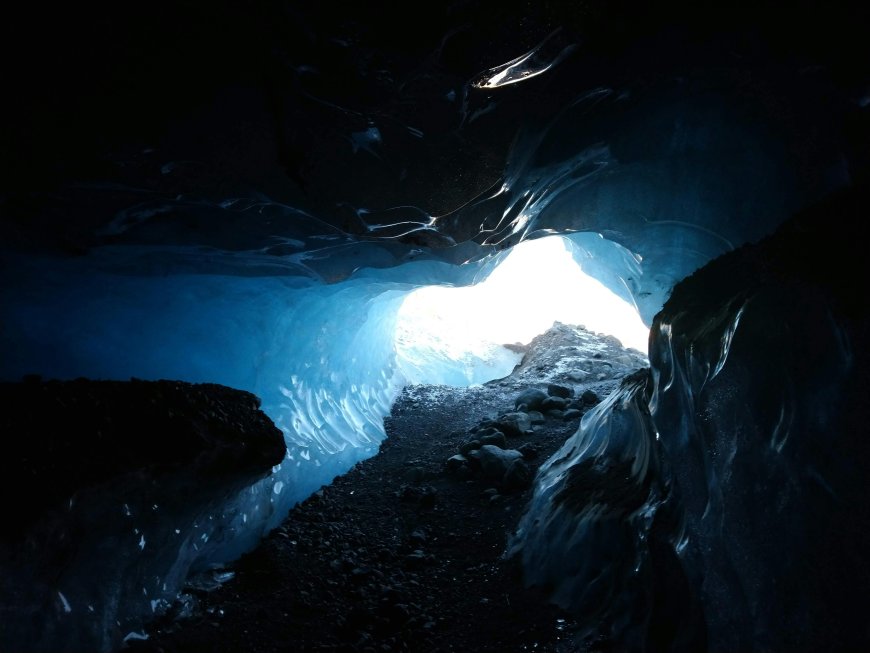Safety guidelines for cave exploration
Cave exploration involves a series of vital safety guidelines. Explorers must use appropriate equipment such as helmets and powerful lights, and ensure the availability of rescue equipment and first aid kits. They should also adhere to designated paths and avoid deviation from them to prevent getting lost inside the cave. Additionally, it is advisable to assess potential risks such as rock collapses and narrow gaps before embarking on exploration.

Cave exploration involves a series of vital safety guidelines. Explorers must use appropriate equipment such as helmets and powerful lights, and ensure the availability of rescue equipment and first aid kits. They should also adhere to designated paths and avoid deviation from them to prevent getting lost inside the cave. Additionally, it is advisable to assess potential risks such as rock collapses and narrow gaps before embarking on exploration.
Safety guidelines for cave exploration
The basics of cave exploration are essential for ensuring a safe and enjoyable experience. This includes a set of procedures and preparations that must be followed and provided before embarking on the exploration journey.
1. Trip Planning: Before embarking on a cave exploration trip, meticulous planning is essential. This involves studying the area you intend to explore, identifying suitable routes, and becoming familiar with potential risks in the area.
2. Essential Equipment: Every explorer should be equipped with essential gear such as helmets, powerful lights, and necessary tools for rescue and first aid.
3. Appropriate Clothing: Wearing appropriate clothing for cave conditions, such as lightweight, moisture-resistant, and mud-resistant attire, is crucial.
4. Guidance and Training: Before starting exploration, each team member should receive necessary guidance and training on how to properly use equipment and respond to emergencies.
5. Communications: Proper communication tools such as mobile phones or radios should be provided for communication in emergencies or in case of getting lost inside the cave.
6. Risk Assessment and Sound Decision Making: Explorers should assess potential risks such as rock collapses and narrow gaps and make sound decisions regarding safety and navigation within the cave.
7. Additional Precautions: Additional precautions should include provisions for potential emergencies such as providing food, water, and extra rescue tools.
By adhering to these basics, explorers can enjoy a safe and rewarding exploration experience inside caves, appreciating the unique natural beauty of this enchanting environment.
The necessary safety equipment for cave exploration to be conducted safely
The necessary safety equipment for cave exploration is a vital part of the exploration experience, ensuring the safety of explorers during their adventures into the deep depths of caves. Cave exploration requires specific equipment and specialized gear to deal with the expected challenges inside caves, ensuring the safety and security of everyone participating in these thrilling journeys.
Firstly, essential cave exploration equipment includes sturdy and durable helmets, which provide protection for the head from potential rock collapses or collisions with the cave's ceilings and walls. Helmets are equipped with adjustable straps to securely fasten them to the heads of explorers during movement inside the caves.
Secondly, lighting is crucial for safety during cave exploration, with explorers needing to use powerful and reliable lights to help them see the way and identify potential risks inside the caves. It is preferable to use lights powered by modern technologies such as bright and continuous white light-emitting diodes (LEDs), ensuring the provision of backup power sources to avoid sudden darkness.
Thirdly, essential safety equipment for cave exploration includes rescue and first aid gear, which explorers must carry with them on every trip. This includes a portable first aid kit containing essential first aid supplies such as bandages, antiseptics, and splinting tools.
The necessary safety equipment for cave exploration includes sturdy helmets, powerful lighting, and rescue and first aid gear, playing a crucial role in ensuring the safety and security of explorers during their exploratory journeys into the dark and thrilling depths of caves.
How to avoid risks during cave exploration
The necessary safety equipment for cave exploration is a vital part of the exploration experience, as it helps ensure the safety of explorers in a complex and ever-changing environment. Proper preparation includes a variety of equipment and supplies that explorers must carry and use correctly during cave exploration.
First and foremost, explorers must wear appropriate protective clothing and gear. Wearing a helmet is essential to protect the head from potential rock falls or other injuries. Additionally, wearing long and sturdy clothing is necessary to protect the body from cuts and scratches.
Secondly, explorers should carry powerful lights and backup lighting equipment. Caves are often very dark, and providing sufficient lighting sources can help avoid accidents and stumbling in dark areas.
Thirdly, explorers should carry first aid tools and handle them with care. Injuries can occur at any time, so explorers should carry a range of bandages, antiseptics, and other necessary equipment to provide first aid in emergencies.
Fourthly, explorers should avoid deviating from designated paths and stay on the trail. Avoiding potential risks requires adherence to designated paths, as these paths have been carefully chosen to provide maximum safety for explorers.
Fifthly, explorers should assess potential risks before venturing into caves. This assessment includes considering factors such as the possibility of rock collapses, narrow gaps, and other environmental hazards that could endanger safety.
By using this equipment and following proper guidance, explorers can achieve a safe and enjoyable exploration experience inside caves and avoid the risks they may encounter during their journey.
The path to safe cave exploration
The path to safe cave exploration requires adherence to several steps and procedures to ensure the safety of explorers during their journey inside the complex and ever-changing caves. These steps include proper preparation before the trip, taking necessary precautions during exploration, and continuously considering safety and protection.
First and foremost, explorers must carefully study the cave intended for exploration. They should obtain accurate information about the cave's structure, internal terrain, and potential associated risks.
Secondly, explorers should check the weather conditions before embarking on the journey, as weather conditions can affect the conditions inside the cave and increase risks.
Thirdly, explorers must be equipped with the necessary safety equipment and tools. This equipment includes helmets for head protection, powerful lights to illuminate the way, and ropes and rescue tools in case of emergencies.
Fourthly, explorers should stay on the designated path inside the cave and avoid deviating from it. Staying on the designated path requires constant attention and no room for complacency, as deviating can lead to getting lost inside the cave.
Fifthly, explorers should be prepared to deal with potential risks such as rock collapses or narrow gaps. They should have a plan to deal with emergencies and provide first aid if necessary.
By following these guidelines and taking necessary measures, explorers can achieve safe cave exploration and enjoy an exciting and enjoyable experience inside this unique natural environment.
Safety check techniques before diving into a cave exploration journey
Safety check techniques before diving into a cave exploration journey are a crucial step to ensure the safety of explorers and the success of the trip. These techniques include several aspects that are checked before starting the exploration:
1. Weather Conditions Assessment: It is important to ensure the weather conditions before diving into the cave. Heavy rains or sudden floods can affect caves and make them more dangerous. Therefore, monitoring weather reports and communicating with local authorities for updated information is necessary.
2. Equipment and Tools Assessment: Equipment and tools used in exploration should be examined to ensure their safety and readiness. Checking the condition of helmets, lights, ropes, and any other essential safety equipment is crucial. Any damaged part should be replaced or repaired before the trip.
3. Skills and Training Assessment: Explorers should assess their personal skills and make sure they are ready to face the challenges inside the cave. If they have deficiencies in a certain area, they should receive necessary training before embarking.
4. Health and Fitness Assessment: Explorers should ensure they are in good health and have sufficient physical fitness to face the conditions inside the cave. If there are known health issues, it is important to consult a doctor before the trip.
5. Plans and Emergency Procedures Assessment: Clear plans should be developed to deal with emergencies inside the cave, such as injuries or getting lost. Assembly points should be designated, and the procedure for contacting rescue teams in case of need should be determined.
By using these techniques and carefully checking them, explorers can ensure their safety before diving into a cave exploration journey and enjoy a safe and thrilling experience in this unique natural environment.
Psychological preparedness for emergency situations inside caves
Psychological preparedness for emergency situations inside caves is considered an essential part of preparing for an exploration trip, as it helps to overcome potential risks and effectively deal with emergencies that may arise during the journey. These psychological preparations include several important aspects:
1. Awareness of Risks: Explorers must understand the potential risks they may encounter inside caves, such as rock collapses, narrow passages, and rising water levels. When explorers are aware of the risks, they can think clearly and make the right decisions in emergency situations.
2. Training and Practice: Explorers should perform appropriate training exercises before the trip to learn how to handle emergency situations. This includes first aid training, learning how to use basic medical equipment, and how to act in cases of entrapment or getting lost inside caves.
3. Confidence in Personal Abilities: Explorers should have confidence in their ability to deal with difficult situations. Positive thinking and self-confidence help to reduce stress and anxiety and increase readiness to act wisely in emergencies.
4. Emergency Planning: Explorers should develop a detailed emergency plan before the trip, including safety procedures and necessary guidelines for dealing with potential emergencies. All team members should be aware of and agree to implement this plan effectively.
5. Positive Thinking and Adaptability: Positive thinking and the ability to adapt to difficult situations are essential parts of psychological preparedness. Explorers should learn how to deal with unexpected situations calmly and logically, and seek intermediate solutions in emergency situations.
Through these psychological preparations, explorers can effectively and confidently overcome emergency situations inside caves, contributing to achieving a safe and enjoyable exploration journey.
Avoiding danger
Avoiding danger during cave exploration is a crucial element to ensure the safety of explorers and the success of the journey. Avoiding danger involves several aspects that explorers should carefully follow:
1. Risk Assessment: Before starting the journey, explorers should assess the potential risks inside the cave. This includes checking the weather conditions, reviewing potential emergency reports, and evaluating the condition of paths and structures inside the cave.
2. Following Guidelines: Explorers should adhere to the guidelines and instructions provided by cave exploration experts. This includes staying on designated paths, avoiding deviation from them, and avoiding areas known to be hazardous.
3. Proper Equipment Usage: Explorers should use appropriate equipment suitable for the type and conditions of the cave. This includes wearing protective helmets to safeguard the head from potential rockfalls, using powerful lamps for illumination, and carrying first aid and rescue equipment.
4. Communication and Collaboration: Explorers should effectively communicate and collaborate with team members and local experts during the journey. Good communication can help identify potential risks and develop strategies to avoid them.
5. Maintaining Calmness and Focus: In emergencies, explorers should maintain calmness and focus, making prompt and fact-based decisions. Staying calm can help overcome difficult situations and effectively avoid risks.
6. Training and Preparation: Explorers should undergo necessary training before embarking on cave exploration. Proper preparation includes learning basic safety techniques, training on equipment usage, and practicing handling potential emergencies.
By following these steps and guidelines, explorers can avoid danger and achieve a safe and successful cave exploration journey.
Summary
Safety guidelines for cave exploration aim to ensure the safety of explorers and minimize potential risks they may encounter during the journey. This includes using proper equipment such as helmets and powerful lights, staying on designated paths, and assessing potential risks before starting exploration. It also requires appropriate training and good preparation, along with the ability to effectively and calmly handle emergencies. By following these guidelines, explorers can enjoy a safe and enjoyable exploration experience inside caves, contributing to reviving their adventures safely and confidently.
Sources
1. National Speleological Society (NSS) The National Speleological Society provides a wide range of resources and articles on safety and preparation for cave exploration trips.
2. British Cave Rescue Council (BCRC) The British Cave Rescue Council offers advice and guidance on safety and first aid in caves.
3. Cave Diving Group (CDG) The Cave Diving Group in the UK provides articles and resources on safety and preparation for cave diving.
4. National Park Service (NPS) The National Park Service in the United States offers resources on safety in caves it manages and oversees.
What's Your Reaction?



































































































































































